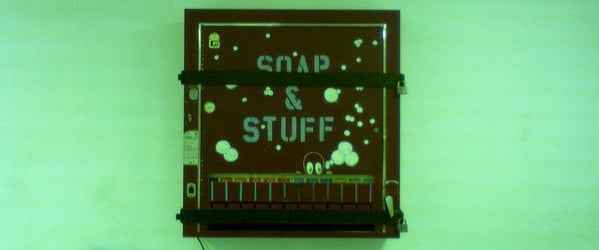At some point you have to leave small-scale cell lysis and move to large culture volumes for experiments currently in vogue, be it microarrays, total RNA libraries, or large-scale pull-downs for interactome or metabolome analysis. And at this point, you have to change your lysis method from an on-the-bench in eppendorfs to one capable of processing tens and hundreds of grams of cells. The method of choice will depend on what is available in your institution but if you have access to alternative methods, read on.
Sonication
A sonicator is the default option that is available just about everywhere – you can use it on any cell, from bacterial to mammalian. The lysis depends on the probe generating ultrasound with frequency of >20 kHz that shatters cell walls. Cells are resuspended in a buffer and kept on ice to avoid overheating and denaturation. Downsides of ultrasound include possible incomplete lysis, proteins denaturation, and DNA shearing into small fragments1.
Remember that during the sonication you also expose your molecules to the ultrasound. Do take precautions – close the doors of sonicator, wear headphones, and use lead extension.
French Pressure Cell Press
If you are familiar with the coffee-making French press, then the principle of this method will be like second nature. It includes passing a cell suspension under high hydraulic pressure via small pores – it is this pressure that shatters the cells. The machine has different regimes for different cell types according to their diameter2.
Similar to sonication, to prepare cells to be lysed in a French press you first completely defrost them as the machine requires cell suspension in a liquid. You need to prep the device by passing the same buffer as required for downstream applications through the machine to ensure equilibration and absence of blockages. Viscous cell suspension may require repeated passages. Cleaning the press with water after the end of an experiment will take time as well, so it’s a more time-consuming method than sonication. However, French press efficiency is better for large cell volumes. It is also a more gentle method than sonication and can be used for the preparation of cellular organelles such as the nucleus.
Solenoid-Based Cryogrinding
“Cryogrinding” means grinding cells that have been frozen in liquid nitrogen into powder. This sounds scary, but you may be familiar with a low-tech option of grinding cells in a mortar with a pestle while topping up with liquid nitrogen to prevent defrosting. This method is satisfyingly alchemist-like, but tiring. The next step is using an electric coffee grinder. Quicker and more efficient, but in my experience, the powder from ground cells flies everywhere, so you need to cover your workbench.
In a solenoid-based machine, you place frozen cells in a container with a solenoid – a metallic cylinder. Activated by a magnetic field, the cylinder moves inside the container and smashes the cells. If you have access to tens of liters of liquid nitrogen that are required to fill the machine, this is the quickest and most efficient method. The still-frozen powder can be kept at – 70 oC until needed and then used in aliquoted portions.
Due to the rapid freezing of the starting material and avoidance of freeze-thawing cycles, cryogenic grinding is especially suitable for protein extraction and affinity capture3.
In conclusion, both sonication and French press method require cells in suspension. Unfortunately, it’s not often that you can start your experiment straight after harvesting cells, so the samples will need to be defrosted. However, the process of defrosting will damage your macromolecules and alter biomolecule composition. From this point of view, avoiding defrosting cells is preferable. Preventing freeze-thaw cycles is possible using cryogrinding.
Literature:
- Stewart D et (2006). Chromatin immunoprecipitation for studying transcriptional regulation in Xenopus oocytes and tadpoles. Methods Mol Biol. 322:165-81.
- Vanderheiden GJ et al. (1970). “Construction of a laboratory press for use with the French pressure cell”. Appl Microbiol. 19 (5): 875–7.
- Michal Domanski et al. (2012). Improved methodology for the affinity isolation of human protein complexes expressed at near endogenous levels. BioTechniques, 0 (0) pp. 1–6







